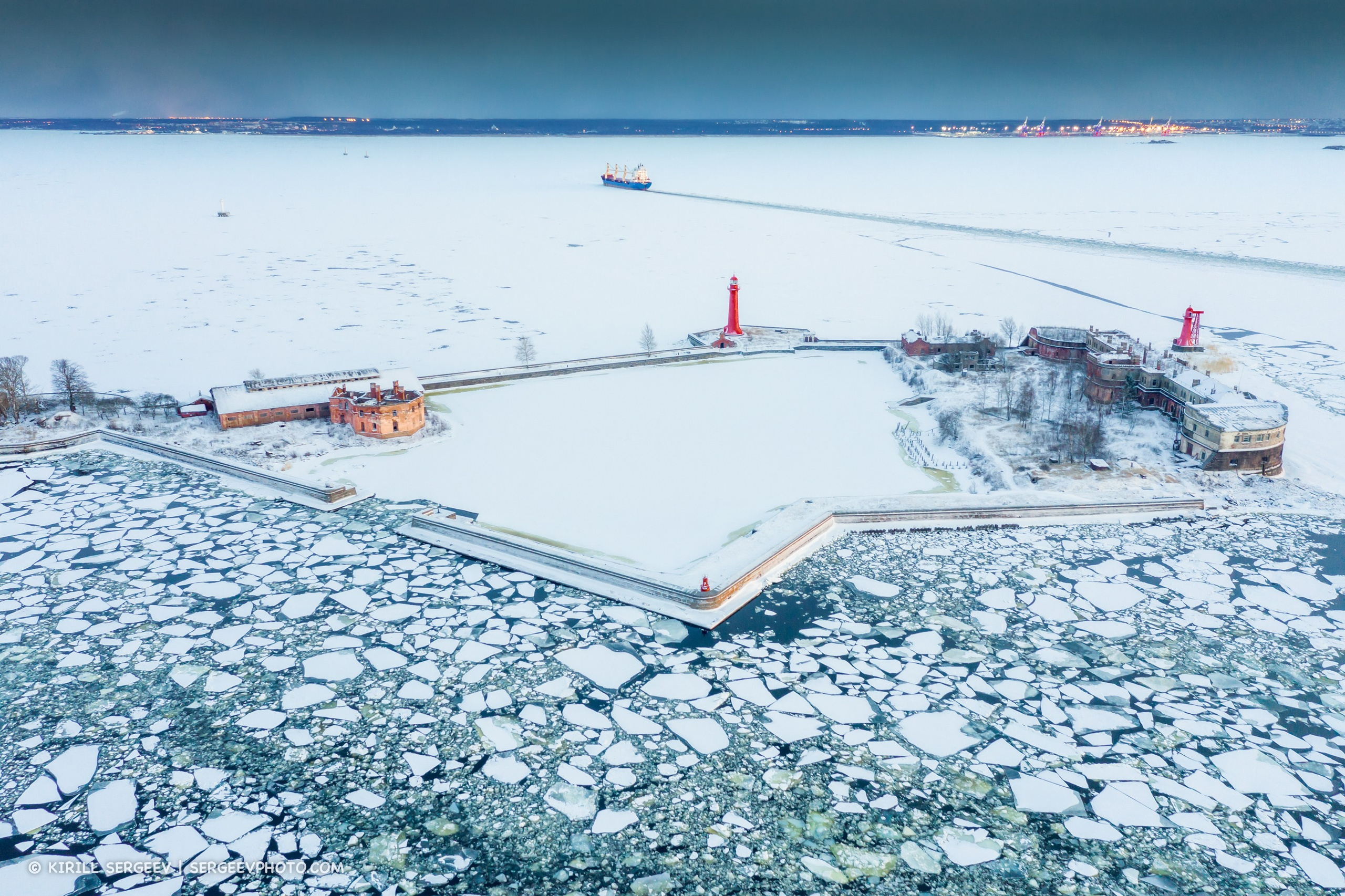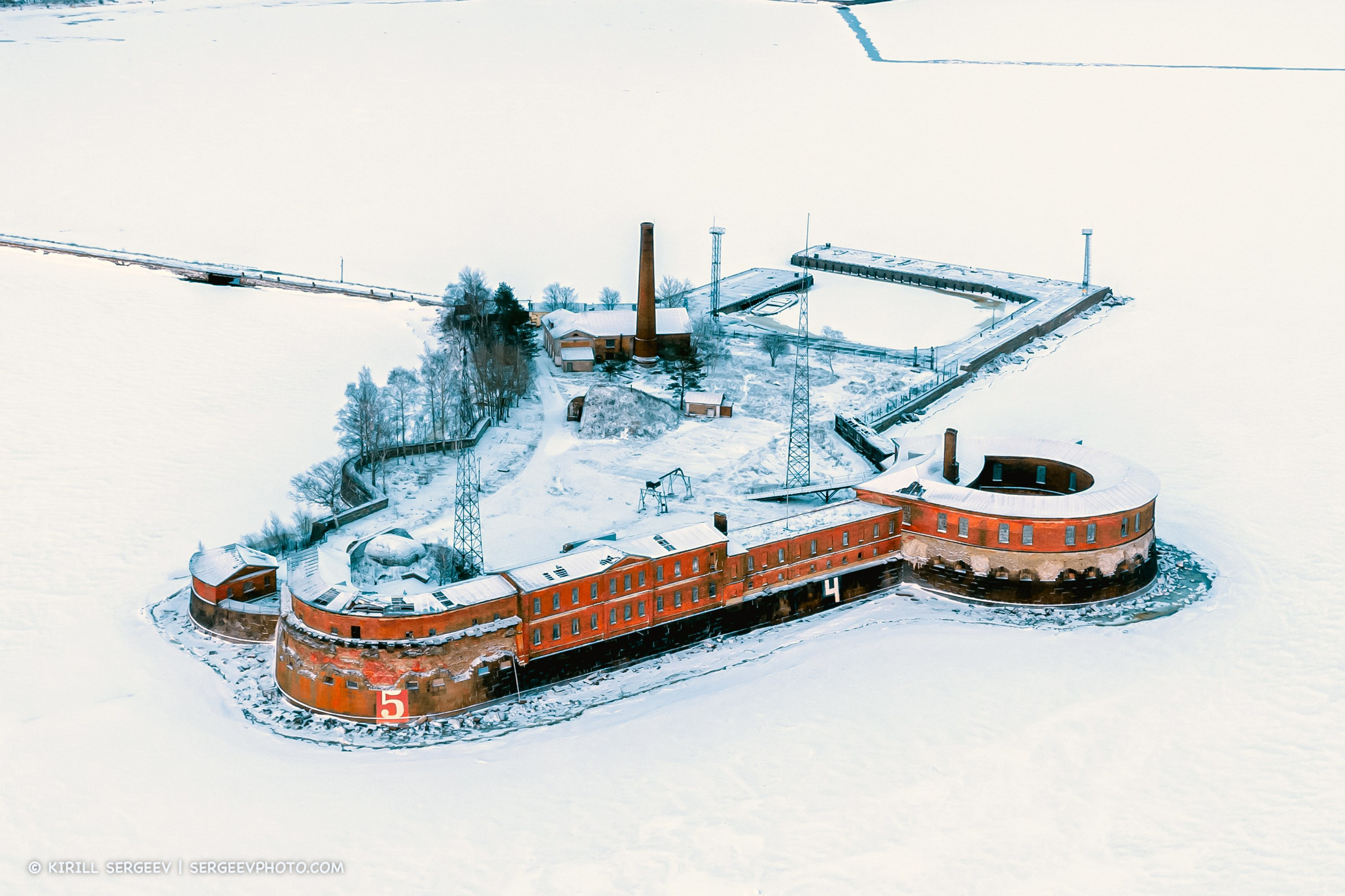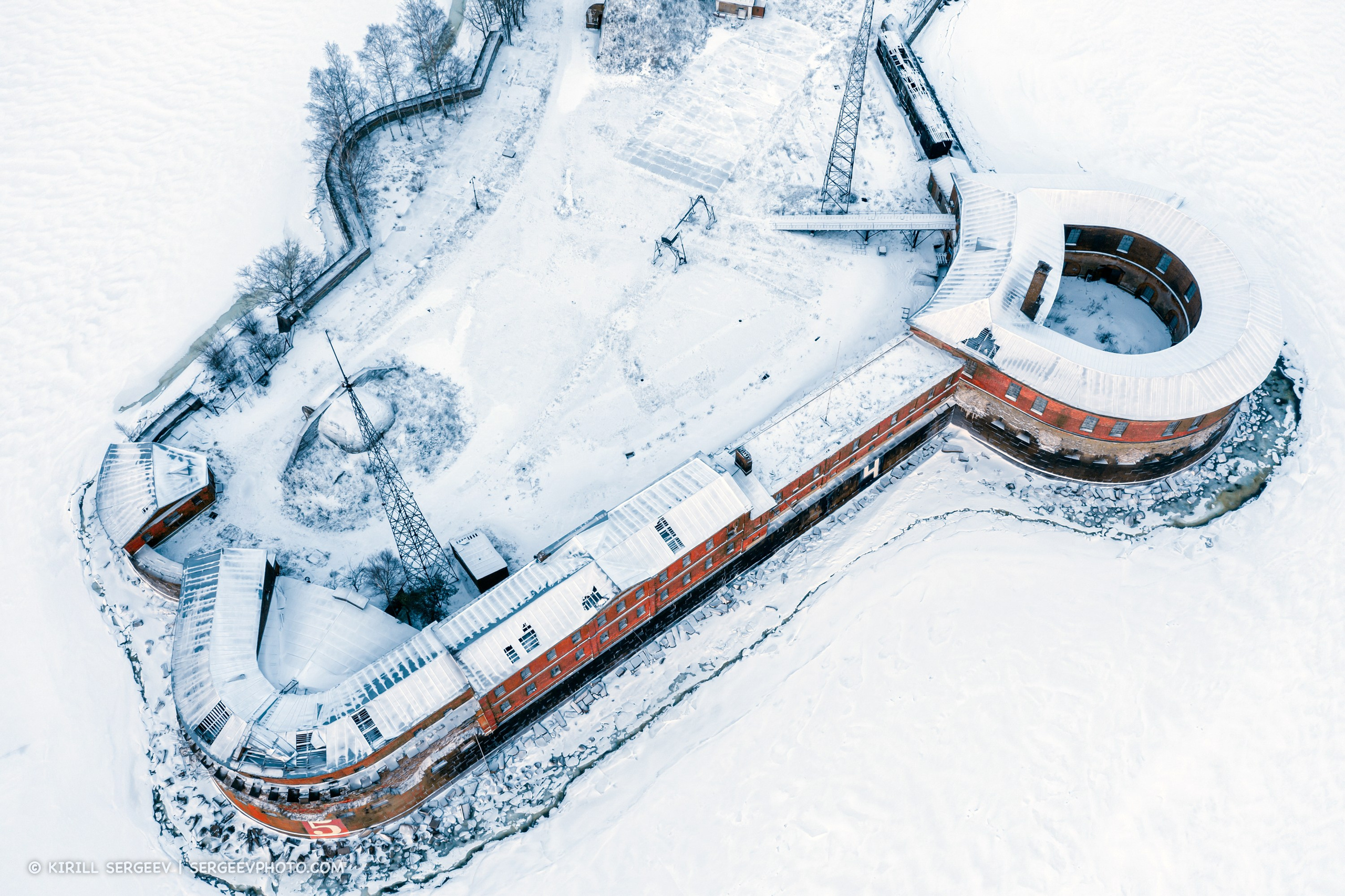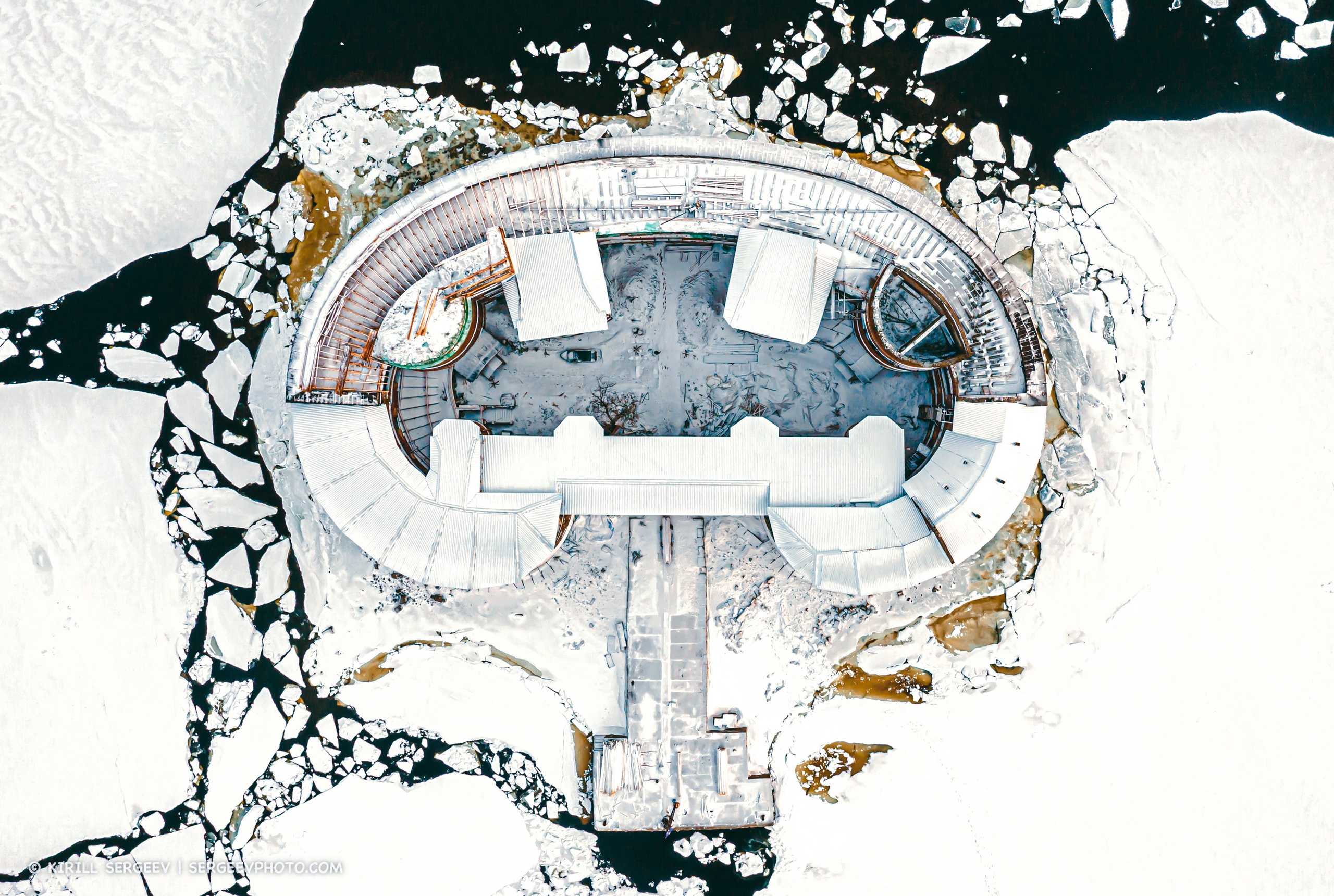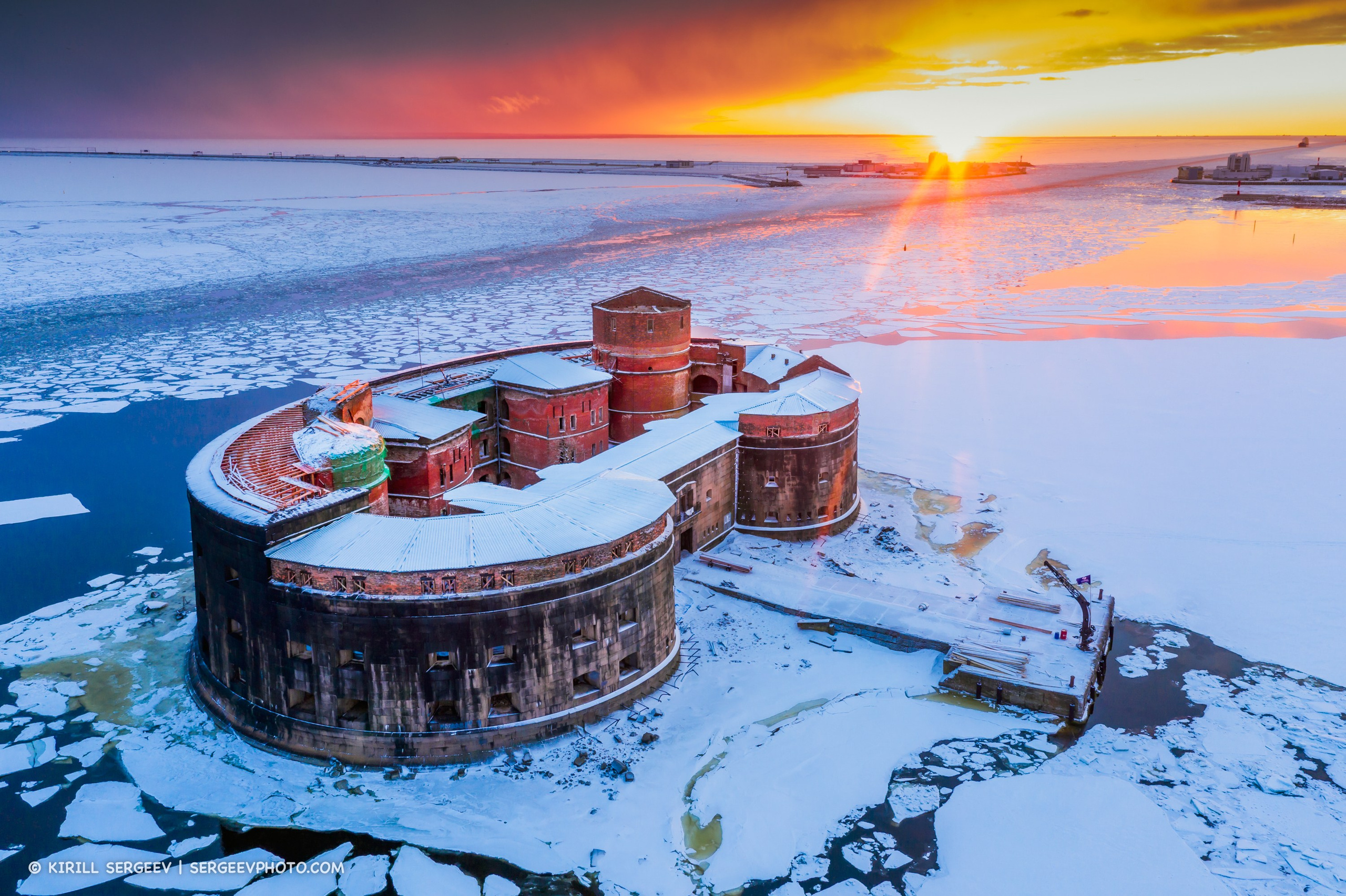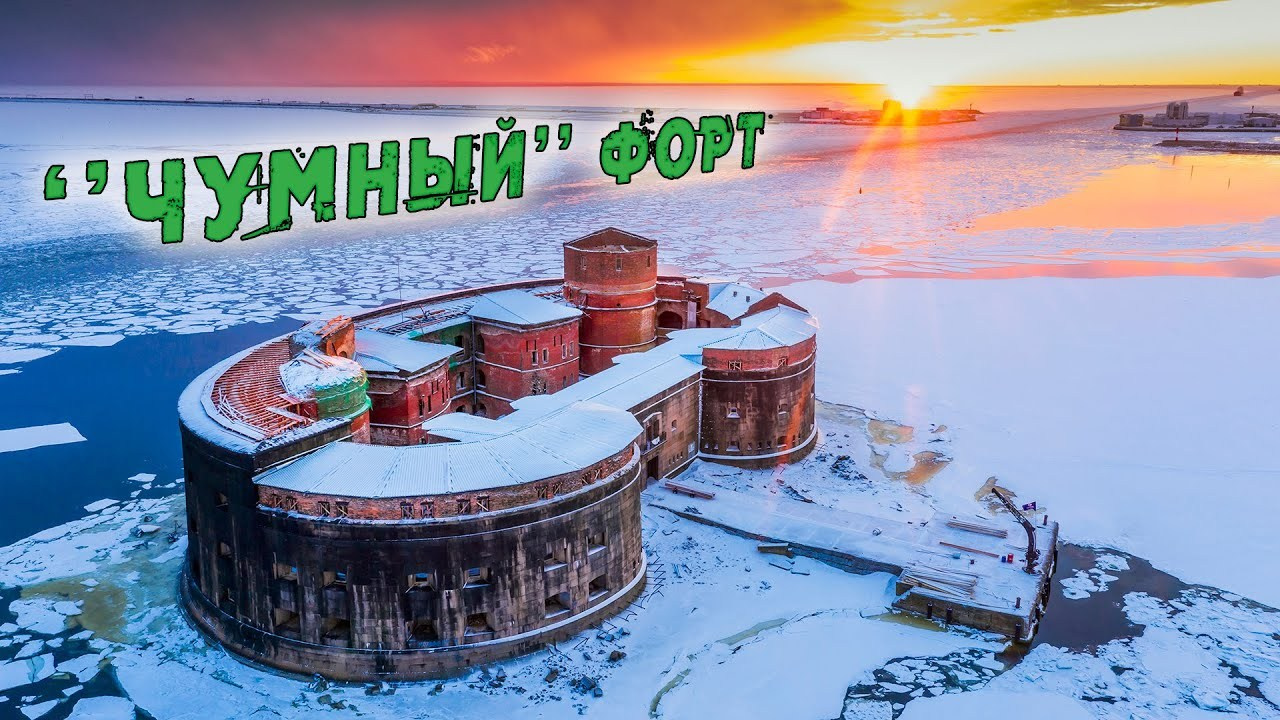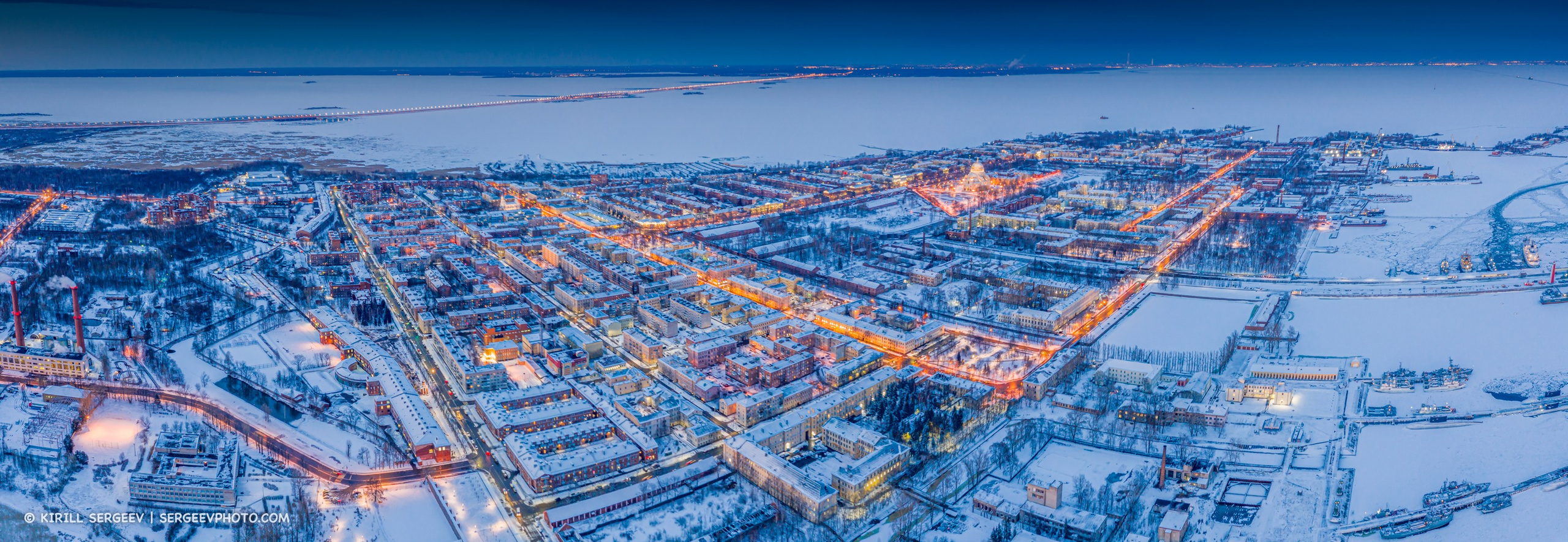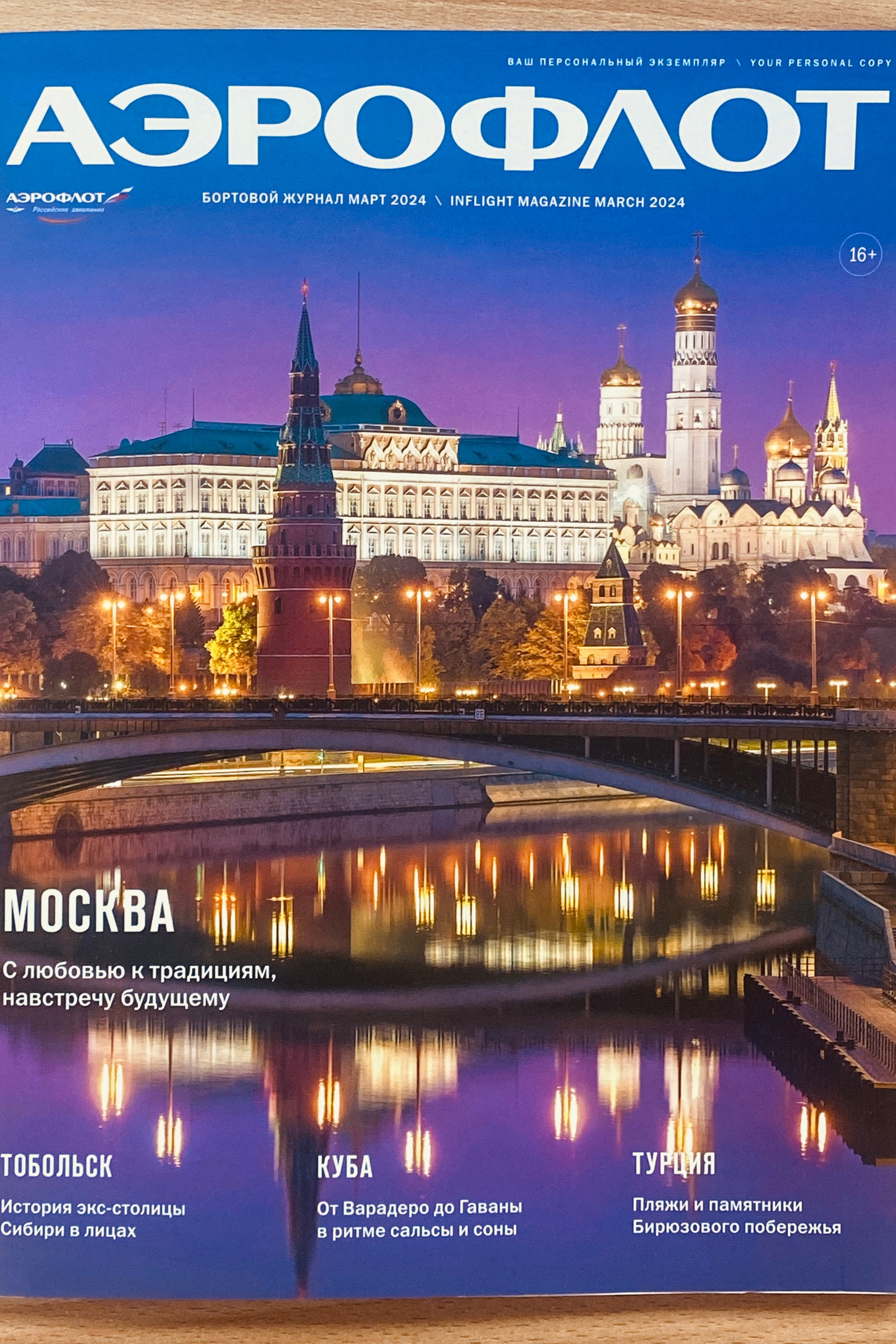Near Kronstadt and along the Gulf of Finland there are many defensive forts that were built to protect St. Petersburg and its coastal waterways. These fortified points played an important role in the defense of the Russian capital, and many of them represent significant objects of historical heritage. Some of the forts about which I will make a brief outline today:
1. Fort “Kronshlot” is one of the most famous forts in the vicinity of Kronstadt and the first of the defensive structures built, from which the development of Kotlin Island began.
2. Fort “Emperor Peter I” (Citadel) — created to protect the southern fairway and the Merchant Harbour. It has an area of 17.8 km² and is connected to Kotlin Island by a narrow-gauge road running along an embankment dam.
3. Fort “Alexander I” (Plague Fort) is part of the Kronstadt defense system, serving to protect St. Petersburg and its coastal waterways with a plague research laboratory once located there.
These forts included concrete fortifications, artillery batteries, underground tunnels and other engineering structures. At one time, the forts of Kronstadt were of strategic importance and were part of an extensive system of defensive structures that protected the Russian Empire from attack from the sea.
Kronstadt ship fairway.
Near the forts there is a special maritime route zone in the St. Petersburg roadstead and the Gulf of Finland, intended for navigation and ensuring navigation safety. The fairway is a section of sea space reserved for the main navigation routes along which ships navigate when entering and leaving the port of St. Petersburg, as well as for international sea routes to the Gulf of Finland.
The Kronstadt ship fairway and the Kronstadt forts are closely connected with the history of maritime and defense infrastructure in this region. Thanks largely to these forts, Kronstadt was considered one of the most impregnable sea fortresses in the world.
The fairway, on the other hand, is a maritime route zone that ensures the safety of navigation in the region and marks the main navigation routes for ships entering the port of St. Petersburg and approaching the forts of Kronstadt. Navigation beacons, buoys and other markings necessary for safe navigation are installed on the fairway. Thus, the Kronstadt forts and the Kronstadt ship fairway represent two sides of the same coin: defensive and maritime infrastructure that ensures the safety and protection of important sea routes in St. Petersburg and the Gulf of Finland.
Fort Kronshlot
Fort “Kronshlot” is one of the defensive structures built in the 19th century on the island of Kotlin in the Gulf of Finland. The fort was conceived as part of the defense system of St. Petersburg and Kronstadt in the event of an attack from the sea. “Kronshlot” was built in the form of a polygonal fortress tower with artillery fortifications and batteries. It was part of an extensive system of defensive structures, which also included the forts of Kronstadt and other fortifications in the bay. The uniqueness of “Kronshlot” lies in its special architecture and engineering solutions, which make it a notable object in the history of military engineering.
Currently, “Kronshlot” is a cultural heritage site and attracts tourists, researchers and architectural enthusiasts. It is important to note that Kronshlot is currently being restored and restored to preserve its historical significance and open it to the general public.
Fort Emperor Peter I
Fort “Emperor Peter I” was built on the island of Kotlin in the 18th century and is of great importance for the history of Russia. Its history and architecture reflect the development of fortification art in Russia, the role of the Kronstadt Fortress, as well as the introduction of the latest military technologies, including mine-torpedo weapons and gunpowder warfare.
The “Citadel” was built in 1734. Initially, the fort was wooden, but 100 years after construction, due to the flood of 1834, they decided to make it stone. The walls were erected on a pile foundation made of concrete and granite. The garrison consisted of 400 men and 97 guns. At the same time, the fort was renamed in honor of the first emperor of Russia, and in 1870 it was connected to the island of Kotlin by a dam.
After the October Revolution and to the present day, the fort has been turned into an arsenal. Currently, large-scale restoration work is being carried out on its territory and the fort is planned to open in 2025.
Fort Alexander I (Chumny)
“Russian Fort Boyard” was built in the 1830s on an artificial island. This fort was part of the defense system of the Kronstadt Fortress, created to protect St. Petersburg and its coastal waterways from enemy attacks.
Fort “Alexander I” was named in honor of Emperor Alexander I, who was the ruler of Russia at that time. Fort Emperor Alexander I, also known as the Plague Fort, was used between 1899 and 1917 as a laboratory for plague research. At this time, the fort was adapted to conduct research in the fields of medicine and biology, especially the study of plague, one of the most dangerous infectious diseases.
This unique use of the fort reflects an interesting period in its history when it served for scientific research instead of its original military purpose. Such adaptations of fortified structures for scientific research represent an important part of the history of scientific and medical discovery.
Panorama of Kronstadt city
Thanks for your attention!
BLOG

Retro-car rally “Victory Circle”

MANPUPUNEUR

Yakutiya

Central Bison Nursery
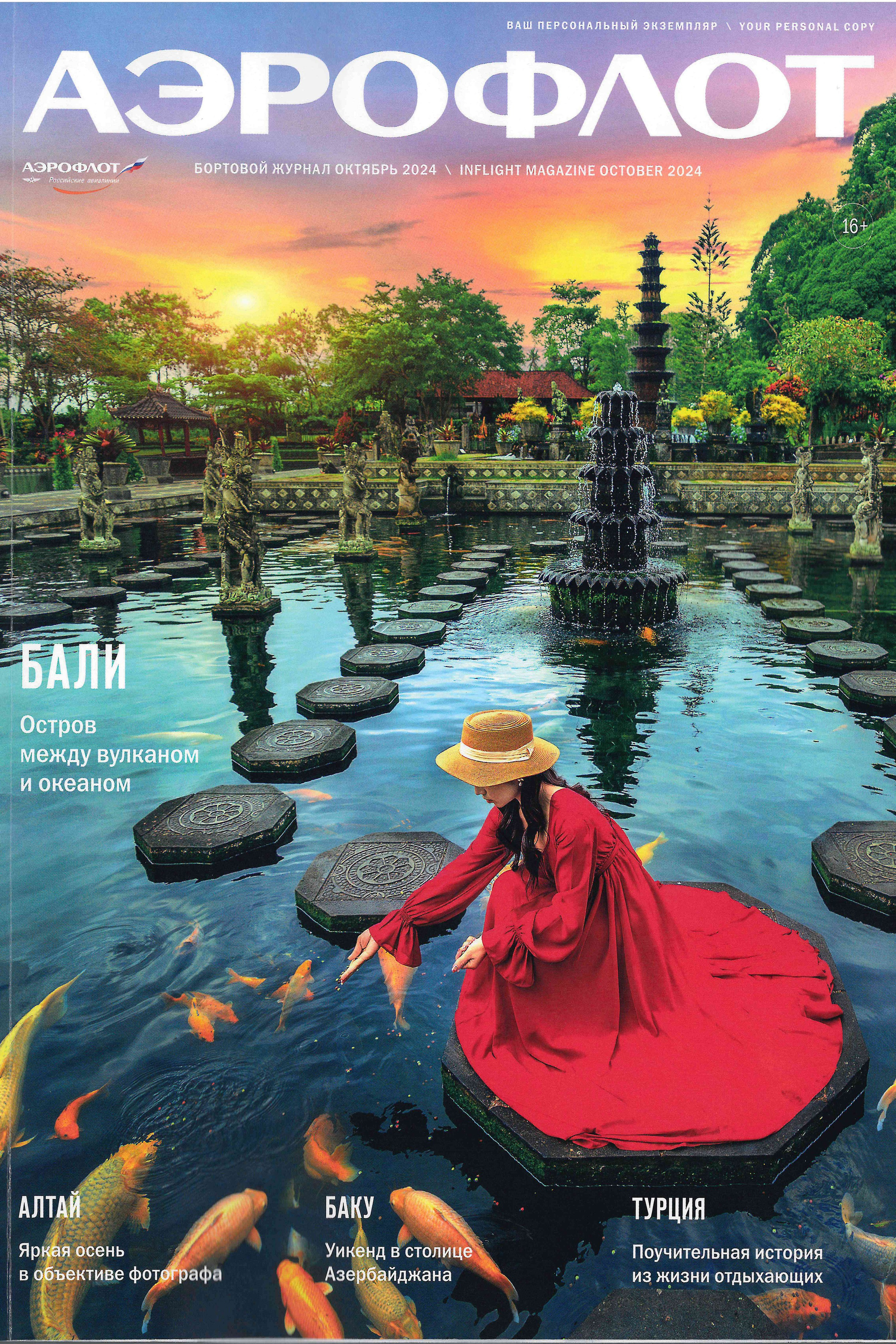
Article in Aeroflot’s in-flight magazine (October 2024)
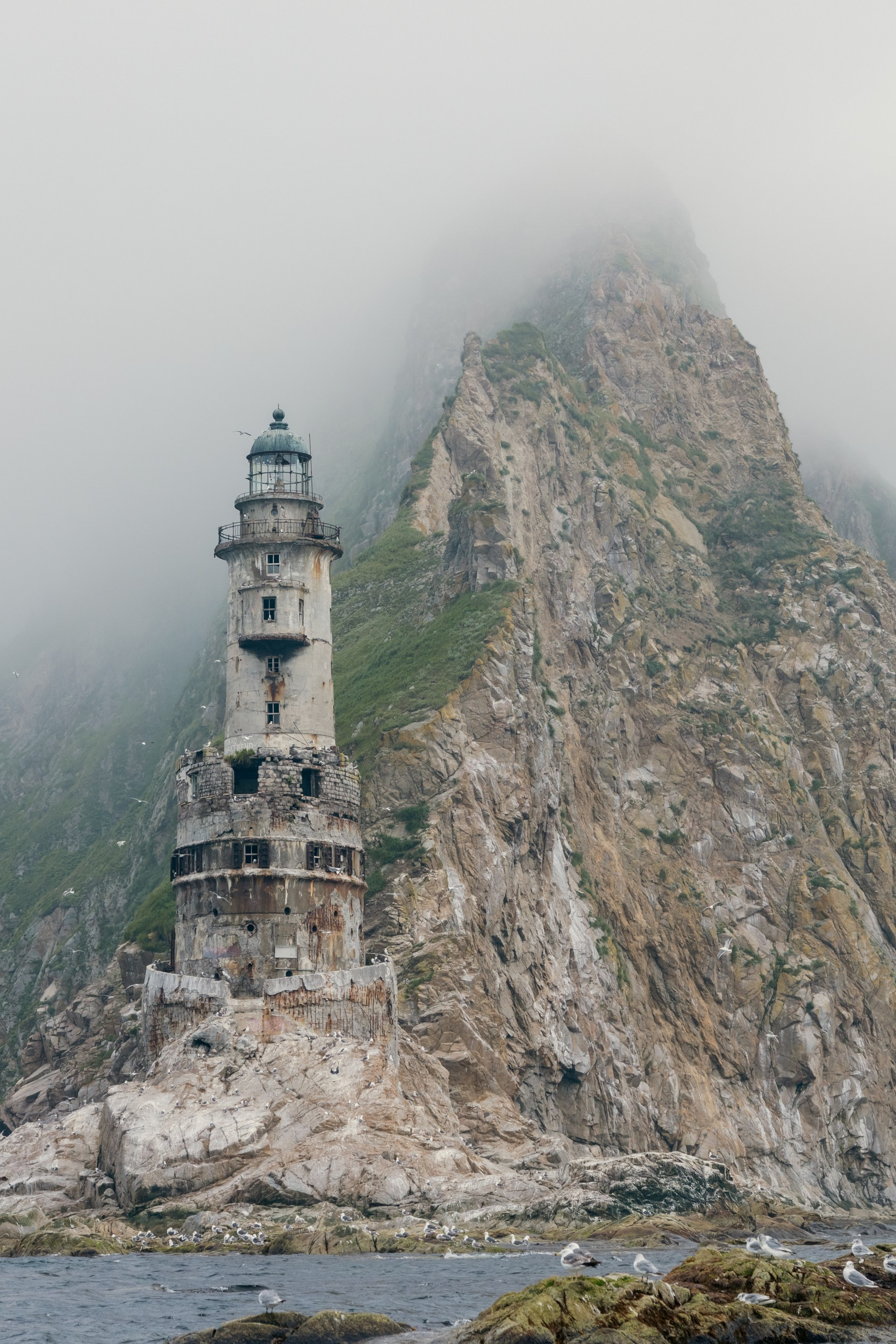
Aniva Lighthouse

Cycling race “Capital” in Moscow


